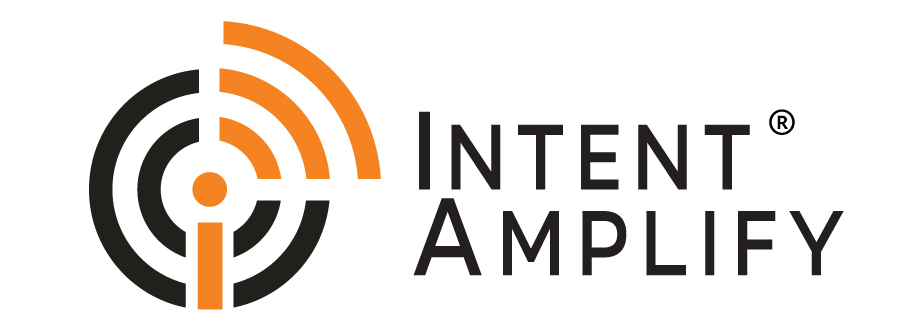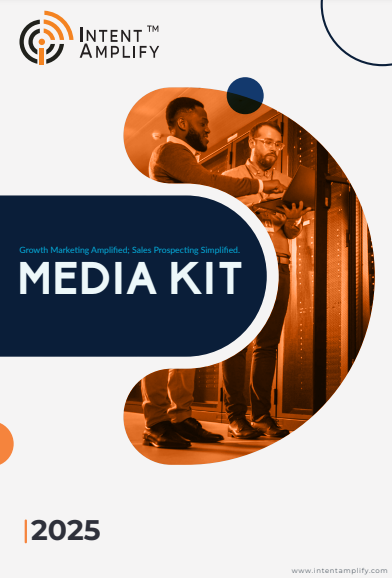
Top 7 B2B Lead Generation Content Types That Will Work For You in 2024
- Last updated on: May 10, 2024
Every best-performing lead generation content is known for one thing — they provide a realistic solution to complex decision-making challenges. When traditional marketing methods fail to generate leads for your business, it’s time to embrace innovation and data-backed tactics. Fresh types of content can expand your reach to attract more — and possibly better — leads. Experimentation and innovativeness are crucial to succeed with lead generation content strategies in 2024. And, thanks to everything that we see ChatGPT doing so far, it is relatively easier to get started with lead generation content development.
Choosing the Right Content Types
So, which types of content should you put your weight behind in 2024 for lead generation?
We cannot single out any particular type of content that would work best for generating B2B leads. It depends on multiple factors, including your brand identity, positioning, products, services, intended customers, and so on.
Effective B2B lead generation content must result from a robust content marketing strategy and an understanding of the various content types that can be used to market your content. From case studies and social media to white papers and landing pages – drive high-quality traffic to your website that grabs your target market’s attention.
The Top 7 Content Types for 2024
Let us understand the top 7 B2B lead generation content types that will work for you in 2024.
Content Formats:
- Landing Pages
- Social Media Posts
- Whitepaper and eBooks
- Podcasts
- Infographics
- Blogs
- Case Studies
Let us understand each of the content types in detail.
1. Landing pages:
Landing pages are an excellent format for presenting content to generate B2B leads. They provide a great platform to launch a new product or service or promote the offer on an existing one. Landing pages to generate B2B leads should have a clearly defined function for information capture, such as a contact form. Naturally, you can give your lead a compelling reason to offer up a few personal details, and that’s where your special offer steps on.
Why Landing Pages are a Key Content Type for B2B Lead Generation
Singular Goal:
Unlike websites with various navigation options, landing pages have one clear objective: to capture leads through a targeted call to action (CTA). This eliminates distractions and guides visitors towards a specific conversion goal, such as downloading a white paper or requesting a demo.
Targeted Content:
Landing pages are designed with a specific audience and offer (gated content, demo, etc.) in mind. The content, visuals, and messaging directly address the pain points and interests of your ideal B2B customer. This targeted approach increases the conversion rate by resonating with the visitor’s needs.
Optimizing for Conversions:
Landing pages allow for A/B testing, a technique where you compare variations of the same page (e.g., headline, CTA button color) to see which version performs better. This data-driven approach helps you to optimize your landing page elements for maximum lead capture.
Focused Message:
Landing pages eliminate clutter and focus on conveying the value proposition of your offer. They clearly explain the benefits of the gated content (white paper, ebook, etc.) or the demo, compelling visitors to take the desired action.
Reduced Decision Fatigue:
By eliminating navigation menus and other distractions, landing pages simplify the decision-making process for B2B professionals. Visitors know exactly what actions would get them the solutions, minimizing decision fatigue and increasing conversion rates.
Minimal Information Required:
Landing page forms typically request only essential information for lead capture, such as name, email address, and possibly company name or title. This minimizes friction and encourages visitors to complete the form without feeling overwhelmed.
Integration with Marketing Automation:
Landing pages can be seamlessly integrated with marketing automation tools. Captured leads are added to your CRM automatically, allowing more targeted follow-up campaigns and lead nurturing.
Conversion Tracking:
Landing pages provide clear data on their performance. You can track conversion rates, see which CTAs resonate most with your audience, and identify any areas for improvement. This data allows you to optimize your landing pages for better lead generation.
Targeted Approach:
Landing pages offer a higher ROI when compared to traditional marketing methods. By targeting qualified leads with a relevant offer, you can generate leads at a lower CPL.
Scalability and Adaptability:
Landing pages can be easily created and scaled to support personalized marketing campaigns or gated content offers. This allows you to adapt your messaging and target different B2B customer segments for efficient lead generation.
2. Social media:
Looking for a more nuanced approach to lead generation in 2024? Start with social media content. According to Hubspot, social media platforms benefit both B2B and B2C marketers showcase their brand’s ethos and enhance reach among new users.
No matter what your business is, whether it is B2B or B2C, relationships with customers matter the most to sustain and grow the business. A broader social media reach helps you achieve that by building new connections and engaging them with your business through your posts. With so many platforms each presenting a different aspect of your business, you can attract the decision-makers who are always searching for useful solutions, with reduced friction and cost.
Why Social Media Is a Key Content Type for B2B Lead Generation
Professional Networking:
Social Media Platforms, including LinkedIn, allow you to connect directly with decision-makers and influencers in your target B2B audience. You can identify potential customers based on their industry, company size, job title, and interests. This targeted outreach increases the chances of reaching qualified leads genuinely interested in your offerings.
Share Valuable Content:
You can share valuable content (like blog posts, infographics, white papers) that establishes you as a thought leader and positions your brand as a trusted resource.
Join Industry Groups:
LinkedIn offers numerous industry groups where you can build relationships with potential customers, showcase your expertise, and generate leads organically.
Run Paid Advertising Campaigns:
Use advanced targeting options to deliver laser-focused ad campaigns.
Active Social Presence:
A consistently active social media presence keeps your brand top-of-mind for potential customers. Regularly sharing valuable content and engaging with your audience demonstrates your industry expertise and builds brand awareness.
Social Proof and Recommendations:
Positive social media mentions, recommendations and shares from satisfied customers act as social proof, building trust and credibility with potential leads.
Track Performance:
Social media platforms offer analytics tools that allow you to track the performance of your content and campaigns. You can see which posts resonate most with your audience and adjust your strategy accordingly to optimize your lead generation efforts.
By leveraging these functionalities, social media becomes a powerful tool for B2B lead generation. It allows you to connect directly with qualified leads, showcase your expertise, nurture relationships, and ultimately convert them into paying customers.
3. Whitepapers & eBooks:
Whitepapers and Ebooks are powerful and best-performing B2B lead generation content types in 2024. More than two-thirds (71%) of B2B marketing professionals use whitepapers and ebooks to influence decision-makers in their ICPs. They offer a prime opportunity to elucidate the value of your product or service and illustrate how it meets users’ needs. Additionally using them, you can showcase expertise and establish authority in your field.
Why Whitepapers and eBooks are a Key Content Type for B2B Lead Generation
Demonstrates Your Expertise:
By providing in-depth research and data-driven analysis of industry trends, challenges, and solutions, you establish yourself as a thought leader in your field.
Provides Gated Content:
By requiring contact information to access the document, you ensure you’re attracting leads who are genuinely interested in your area of expertise. This allows you to focus your marketing efforts on qualified prospects who are more likely to convert into customers.
Lead Nurturing Potential:
Once you capture leads through your whitepaper or ebook, you can nurture them further with targeted email campaigns. By offering additional resources, case studies, or webinars related to the whitepaper’s topic, you keep your brand top-of-mind and guide them along the buyer’s journey.
Provides Detailed Information:
Whitepapers and ebooks go beyond surface-level marketing messages offering in-depth solutions and best practices. This empowers potential customers to make informed decisions about their business needs.
Addresses Pain Points:
Effective whitepapers and ebooks directly address the specific pain points and challenges faced by your target audience. By offering valuable insights and actionable recommendations, you position your product or service as the ideal solution.
Supports Multiple Content Formats:
Whitepapers and ebooks can incorporate various content formats to enhance user experience and cater to different learning styles. Charts, graphs, infographics, and even case studies can be integrated to make the content more visually appealing and engaging.
By offering valuable content that addresses their specific needs and challenges, whitepapers attract qualified leads who are actively seeking solutions. This makes them a powerful content type for B2B lead generation in 2024.
4. Podcasts:
Over the past decade, podcasts have experienced a meteoric rise in popularity, with no signs of slowing down. B2B Brands have a unique opportunity to deliver significant value through this platform, granted they select topics that resonate deeply with their audience. The most successful podcasts offer education, entertainment, or inspiration—or even better, a combination of all three.
Why Podcasts are a Key Content Type for B2B Lead Generation
Establishes your Industry Authority:
By hosting or participating in podcasts that address B2B challenges, you establish yourself as an authority figure in your industry. Listeners perceive you as a trusted resource with valuable insights to share.
Helps Reach Targeted Audience:
You can tap into a highly engaged audience of B2B professionals who are actively seeking information and solutions. By focusing on relevant topics and industry challenges, you reach qualified leads genuinely interested in what you have to offer.
Are Conversational and Intimate:
Podcasts offer a more intimate and engaging format compared to traditional marketing messages. Listeners feel they’re a part of a conversation, making the information more relatable and memorable.
Offer On-Demand Listening:
The beauty of podcasts is their on-demand nature. Busy professionals can listen on their commutes, during workouts, or at their convenience. This flexibility caters to the fast-paced B2B world.
Facilitate In-Depth Discussions:
Podcasts allow for in-depth discussions and nuanced perspectives on industry challenges. This fosters trust with listeners who appreciate the detailed exploration of complex topics.
Promotes Human Connection:
The audio format allows listeners to connect with the host and guests on a human level. Hearing their voices, stories, and passion builds trust and strengthens relationships with potential leads.
Supports Targeted Follow-Up:
By capturing leads who downloaded content or visited your website through podcast CTAs, you can nurture them further with targeted email campaigns or personalized outreach.
Offers Content Diversity:
Podcasts offer a variety of content formats beyond interviews. You can create panel discussions, industry news updates, or even Q&A sessions to keep your content fresh and engaging for potential leads.
Overall, B2B lead generation podcasts provide a valuable platform to showcase your expertise, connect with B2B decision-makers on a deeper level, and generate qualified leads actively seeking solutions in your industry.
5. Infographics:
Infographics provide an ideal content type for B2B lead generation. They serve as lead magnets on websites, motivating visitors to give away their contact information in exchange for valuable visual content. They can also be used as follow-up materials in cold-calling campaigns or as attachments in cold or warm sales emails.
Why Infographics are a Key Content Type for B2B Lead Generation
Visual Appeal:
Customers hate to engage with brands that use information overload to influence decisions. B2B lead generation-focused infographics stand out with their visually compelling design. Charts, graphs, icons, and illustrations make complex data or topics easier to understand at a single glance. They offer a concise and visually engaging summary of information, allowing viewers to absorb key points quickly. This makes them ideal for B2B audiences who need to consume information efficiently.
Visual Storytelling:
Infographics leverage visual storytelling to present information in a way that’s more memorable than plain text. By combining visuals with clear explanations, they enhance knowledge retention and make complex B2B topics easier to recall.
Clear Calls to Action:
Effective infographics incorporate clear calls to action (CTAs) that prompt viewers to take the next step. This could be downloading a white paper, registering for a webinar, or visiting your website for more information. By making it easy to take action, infographics convert viewers into qualified leads.
Social Media Sharing:
Infographics are inherently shareable on social media platforms like LinkedIn. They capture attention and encourage viewers to share valuable content with their network. This expands your reach and generates leads organically through social sharing.
Multiple Platforms:
Infographics can be used on various platforms, including your website, blog posts, social media feeds, and even email marketing campaigns. This versatility maximizes their reach and lead-generation potential.
Content Repurposing:
The information from your infographic can be repurposed into other content formats like blog posts, presentations, or even videos. This maximizes the value you get from the infographic and extends its reach to generate leads across different channels.
By offering a visually engaging and easily digestible format for complex B2B information, infographics capture attention, improve information retention, and generate leads through clear CTAs.
6. Blogs:
Blogs form a key content type for attracting B2B leads. Regularly publishing high-quality blog posts can help businesses establish themselves as thought leaders and attract their target audience. Blogs are a type of content usually consumed at the awareness stage, i.e., the top of the sales funnel. Prospects may either be looking for a solution or be simply bored at work. If such prospects come across a blog that is highly engaging and informative, the chances of having them hooked will exponentially increase.
Why Blogs are a Key Content-Type for B2B Lead Generation
Keyword Targeting:
By strategically incorporating relevant keywords and phrases in your blog posts, you improve your website’s search engine ranking (SEO). This increases organic traffic from B2B professionals searching for information related to your industry and the challenges they face.
Promotes Content Marketing:
Blogs are a cornerstone of content marketing. They allow you to consistently publish valuable and informative content that educates your target audience, establishes you as a thought leader, and attracts potential customers organically through search engines.
Building Relationships:
Regular blog posts with valuable content foster trust and build relationships with potential customers. Readers see you as a reliable source of information and a helpful guide on their buying journey.
Thought Leadership Establishment:
By consistently sharing industry insights, trends, and data-driven analysis, you establish yourself as a thought leader in your B2B space. This positions your company as a go-to resource and attracts qualified leads seeking solutions.
Landing Page Integration:
You can link your blog posts to relevant landing pages that offer gated content (like white papers or ebooks) in exchange for lead information. This allows you to capture leads who are genuinely interested in learning more about your solutions.
Website Analytics:
You can track key website analytics to understand how your blog posts are performing. See which topics resonate most with your audience and adjust your content strategy accordingly.
Content Optimization:
Using website analytics and audience feedback, you can optimize your blog content for better lead generation. Focus on high-performing topics, refine keywords, and tailor your content to address the specific needs of your ideal B2B customer.
7. Case studies:
Case studies are among the best-performing lead-generation content formats. These generate B2B leads for content marketers by illustrating the practical demonstration of your product or service, especially when aligned with various usage scenarios across different industries or sectors. Furthermore, case studies enable brands to showcase their client roster, fostering trust and showcasing credibility.
Why Case Studies are a Key Content Type for B2B Lead Generation
Reduces Risk Perception:
B2B purchases often involve significant investment. Case studies showcase successful implementations of your product or service in similar businesses, reducing the perceived risk for potential customers, and making them more comfortable choosing you.
Establishes Social Proof:
People are more likely to trust recommendations from others, especially from similar businesses. Seeing how others have benefited builds trust and positions you as a credible solution.
Provides Quantifiable Results:
Case studies showcase measurable results achieved by other customers. This validates your claims about the effectiveness of your product or service with concrete data (increased sales, improved efficiency, etc.).
Customers Can Relate:
Case studies that address specific challenges and needs of your ideal customer profile allow them to see themselves reflected in the success stories, making your solution more relevant and relatable.
Establishes Human Connection:
Potential customers connect better with stories that showcase the challenges overcome and the positive impact your solution had. This fosters a sense of connection and trust.
By effectively using case studies, you can build trust, showcase your value proposition, and guide potential customers along their buyer’s journey, ultimately converting them into leads.
Getting it right with lead generation content in 2024
Building an effective lead generation content strategy is time-consuming and dotted with painful experiences, that come with a heavy price to pay for the marketers. In 2024, creating the best-performing lead generation content for B2B customers is still daunting. While most traditional content marketing strategies yield short-term gains for customers, lead-generation-specific content development requires long-term planning, execution, and review that can truly match your game and amplify your engagement with the prospects.
Accelerate your leads discovery process using Intent Amplify’s dedicated intent-based content syndication campaign. For more information, please fill out the Contact Us form to speak to our lead generation specialist today.




